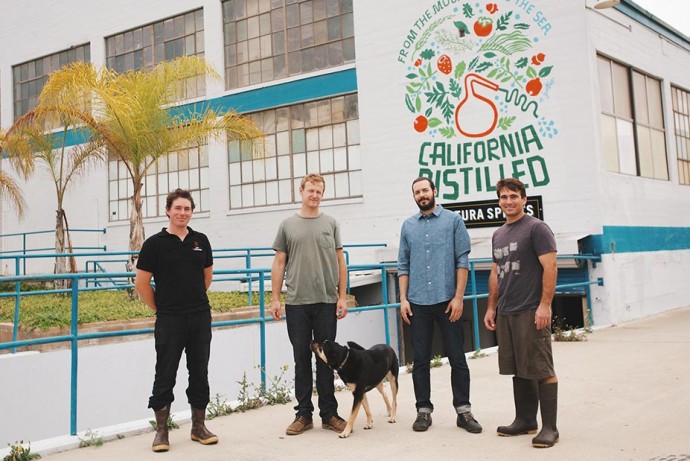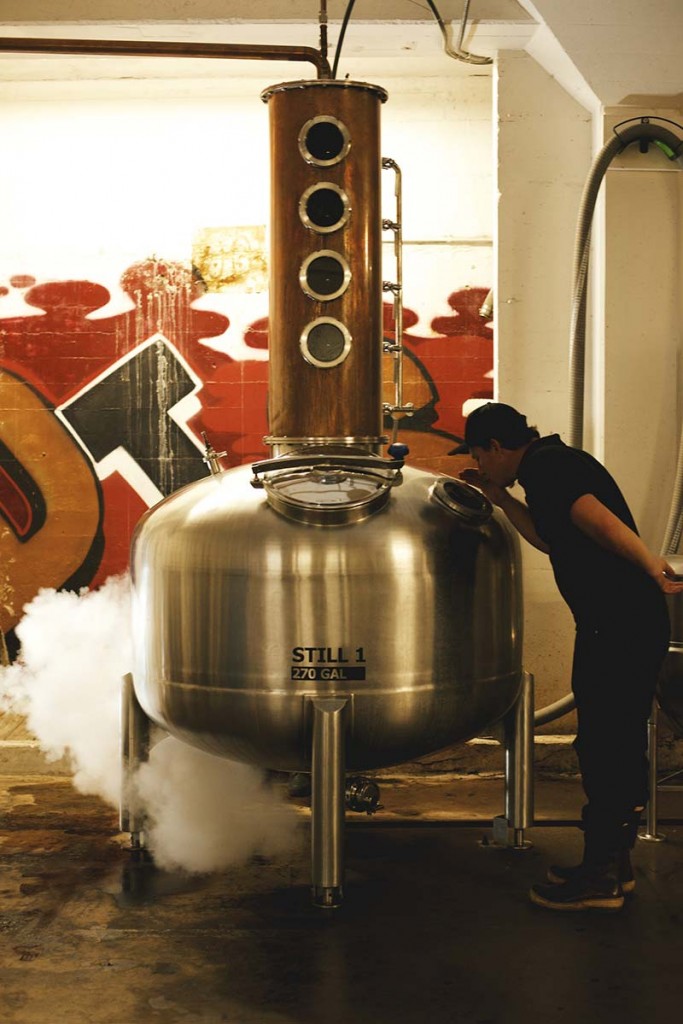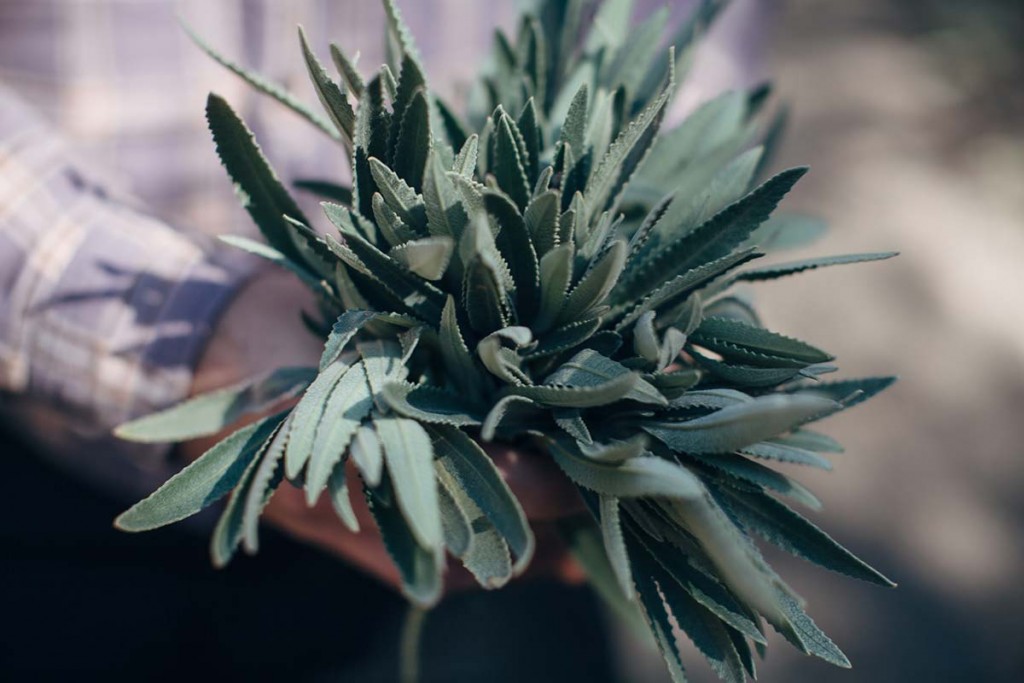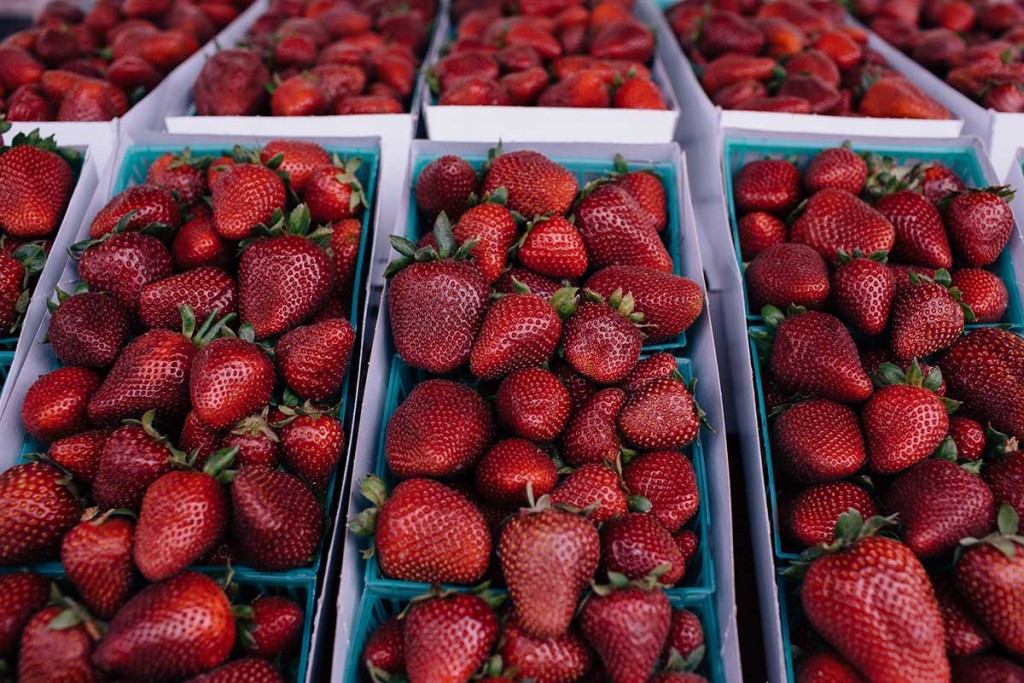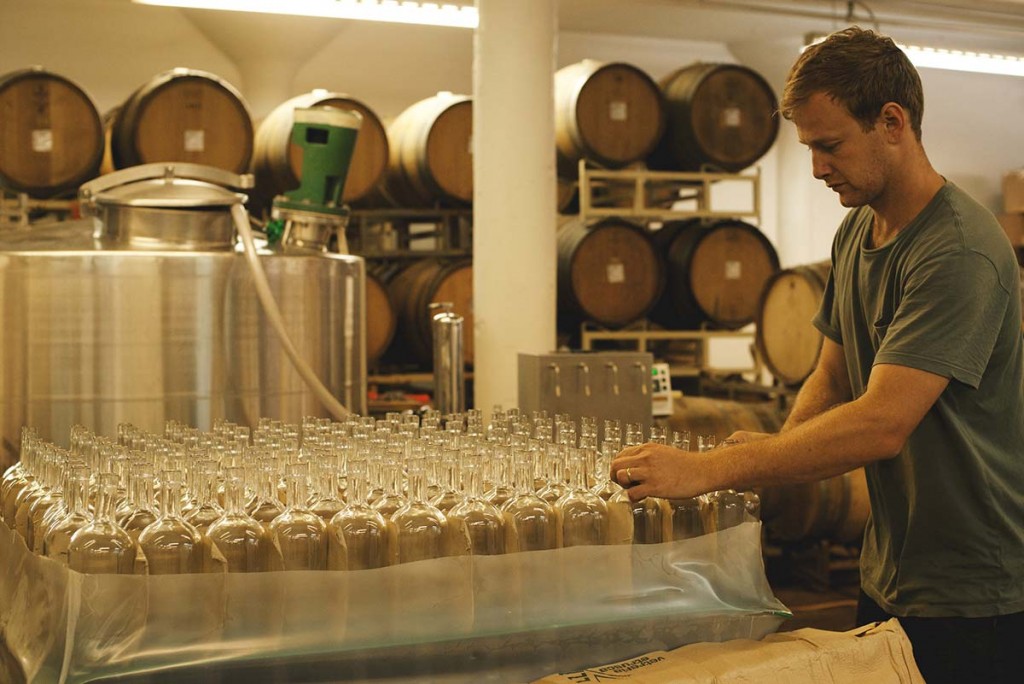In the wine industry, you often hear the term terroir. It refers to the environmental effects on a grape grown in a particular region—temperature, sunlight, humidity, and soil acidity, among others—that give it a distinct, recognizable character. In short, great wine tastes like the land it comes from. Nestled in the foothills along California’s Central Coast, the team at Ventura Spirits is crafting products that display a very different kind of terroir, but one that’s nonetheless tied to the rolling hills and verdant plains that they call home.
Each of their spirits typifies a different facet of Ventura County’s diverse agricultural landscape. The California Vodka is distilled from local strawberries, and carries subtle notes of fruit all the way through to the final product; Opuntia is an eau-de-vie produced from prickly pear cactus fruit, making for a truly unique spirit; and Wilder Gin is perhaps the most familiar to locals, infused with a blend of botanicals literally harvested from the hills around the distillery. But most impressively, they managed to develop these recipes with hardly any professional experience.
Hobbyist Distillers No More
Though an engineer and product designer by trade, head distiller Anthony Caspary has been making spirits in his free time since he was in high school. A little over five years ago, he got together with his brother, Andrew, their friend Henry Tarmy, and Tarmy’s brother-in-law James Greenspun to turn that hobby into a business.
“Andrew and Henry went to college together, so that was the origin story, or at least the key relationship that brought us all together,” Caspary told us. “We formed the LLC in 2011, signed a lease on a place a year after that, spent the most of the next two years building equipment and getting licensed, and formulating recipes the whole time.”
Given that they built almost all of their equipment from scratch—most notably their pot-column hybrid still—getting it done in two years was quite a feat. But Caspary remains humble about the process.
“You know, actually it really wasn’t all that challenging,” he said with a chuckle. “The design of a still, as far as our interpretation goes, is pretty damn simple. And we had the benefit of designing it in a way that we knew we could actually fabricate it. The equipment being built by a bunch of novices isn’t without it’s daily problems, though.”
Tarmy chimed in, grinning. “I think you’re underselling yourself slightly.”
“Yeah, maybe. But overall it works for anything we want it to do, and our hope is that it offers a unique house flavor to our spirits.”
“It doesn’t necessarily look like one of those really expensive German stills, in terms of elaborate curves and that sort of thing,” Greenspun explained. “But it’s the same size, it does the same job, and it cost us about $10,000. Some of those things are coming in at multiple hundreds of thousands of dollars. And one of the first things Anthony said was that we weren’t allowed to name it,” he laughed. “So it’s ‘Still 1.’ And I imagine at some point there will be ‘Still 2.’”
All the while, the nascent Ventura Spirits team were dealing with day jobs and other responsibilities that forced them to build their business after hours. They would meet at their distillery after work, located in the basement of an industrial building a few miles from downtown Ventura, and hammer copper or experiment with novel recipes late into the night.
After years of preparation, hard work, and an occasionally overwhelming amount of bureaucracy, though, they launched their first commercial spirits in July of 2014.
Bottling the Landscape
The spirits themselves are where the team’s artistry really shines. They don’t shy away from using strange fruits or plants, and they seem to take a certain glee in figuring out exactly which novel processes or equipment they need to make everything come together.
In none of their current offerings is this experimental tendency more apparent than in Opuntia, Ventura Spirits’ prickly pear eau-de-vie. It’s a well-balanced spirit, slightly sweet but possessing a uniquely succulent quality that’s difficult to describe unless you’ve actually encountered a prickly pear fruit.
“The prickly pear is this ubiquitous plant that dots the hillsides all around here,” Tarmy told us. “It’s an interesting one because everyone seems to be familiar with it generally, but they haven’t really experienced the taste. We saw a neat opportunity to create a distinctly regional spirit, and to bring people a character and a flavor experience that they might not have been familiar with.”
“It has a lot of applications in the craft cocktail world,” Greenspun continued. “Especially as a modifier with mezcals and tequilas, or even as a base spirit itself. Now that people are starting to recognize it more as a brand, we’re seeing bartenders really going to town with it.”
Wilder Gin may, however, be the most immediately evocative of the Central Coast terroir. “It’s made with a bunch of botanicals from up in the hills, and the guiding vision for that was to try and embody the sensory experience that you would get walking up Horn Canyon,” Tarmy said, referring to a popular trail in the nearby Ojai Valley.
“A lot of the same stuff you’d get riding your horse up that path is what we actually use in the gin. We use Ojai Pixie tangerine peels, California sagebrush, purple sage, California bay, which is literally all stuff you’d encounter on any hundred-yard stretch up there.”
It’s an infused gin, and in keeping with the DIY nature of their operation, the infusions are carried out in a repurposed industrial coffee maker. Still printed boldly on the side (and unlikely to ever be removed) are detailed instructions about how to load the grounds and pipe in the water; it makes for an endearing aesthetic.
Finally, there’s Ventura Spirits’ California Vodka, a product that almost never ended up being made in the first place. “We always sort of looked down our noses at vodka as a category, because the vast majority of the time it’s just a commodity product,” Tarmy explained. “We didn’t want to have to spout a bunch of bullshit about what differentiated our vodka, or rely on the fact that it’s made locally even if it’s distilled with commodity grain from Iowa.
“But when the opportunity to get our hands on all these strawberries came onto our radar, we thought it might be a way to do something on our terms, where we’re doing the original fermentation and offering something in the vodka category that’s still unique. We made a conscious choice to not give it a very vigorous filtration after we finished distilling it, so it still possesses a little hint of that fruit. It’s a little bit different.”
While it’s not a flavored vodka—meaning all of its flavor comes from the original fruit mash, not any infusions or flavorings after distillation—it’s a surprisingly complex spirit. The strawberries are recognizable even after six or seven runs through the still, thanks in large part to that lack of filtration. The hybrid still itself also plays a role, allowing the product to retain much more of its flavor and aroma than an industrial column still would.
“If you’re a craft producer, it’s weird to make something that you talk about in terms of it having no character. ‘Try our vodka, it’s so smooth you can’t taste it!’” Tarmy said, laughing. “More and more, people are starting to talk about vodka in terms of character, rather than in terms of a lack of character.”
Always Experimenting
Despite already launching a well-received trio of products, the Ventura Spirits team is always looking for new flavors to mess with. Sometime in the not-too-distant future, they plan to release a pair of fruit brandies—one made from strawberries, the other from persimmons—but almost certainly more surprising is the seaweed-based spirit that’s been in the works for the last several years.
“It’s made from the giant kelp that grows right off the coast here,” Caspary said. “It’s an algae, so its composition isn’t the same as a terrestrial plant. Once you understand where the energy source is, you can get to it and turn it into alcohol. We’ve had to re-learn a lot of things in order to learn how to work with it, but we think there’s a lot of promise there.”
Tarmy elaborated a bit. “There are some very specific enzymes we need to introduce in the mashing process to make it work, so we’ve actually been working on it for years and trying all kinds of stupid stuff to figure out what works. We think we’re at a point now where we can come out with something really good, probably with a combination of giant kelp and rice.
“In terms of where we are in the world, we’ve got the gin, which is saying something about the hills, and we’ve got the vodka, which brings you down into the plains. It’s nice to finally get out into the water as well.”
Even without the new products, Ventura Spirits expects that they’ll be expanding their operation in the next year or two just to keep up with demand. It’s a good problem to have, though, and they seemed excited about what the future holds for their company.
As they’ve grown over their short time on the market, they’ve been conscious not to lose touch with the land that inspired their success in the first place. “With our interests and our idea of what we wanted the business to be, it makes sense to have everything we do be rooted strongly in the place. Otherwise, what do we have to differentiate ourselves from other distillers?” Tarmy told us. “The natural world around the distillery definitely shapes everything we do.”
While we wait to see what flavors Anthony, Andrew, Henry, and James will be inspired to explore next, we’ll just have to keep ourselves busy enjoying the Central Coast vicariously through a bottle—and wondering what, exactly, that seaweed booze is going to taste like when we finally get our hands on it.
Ventura Spirits are currently available in bars and liquor stores throughout California. Find the nearest one with their handy store locator.
Cover Photo: Jenni Kayne, Rip&Tan
